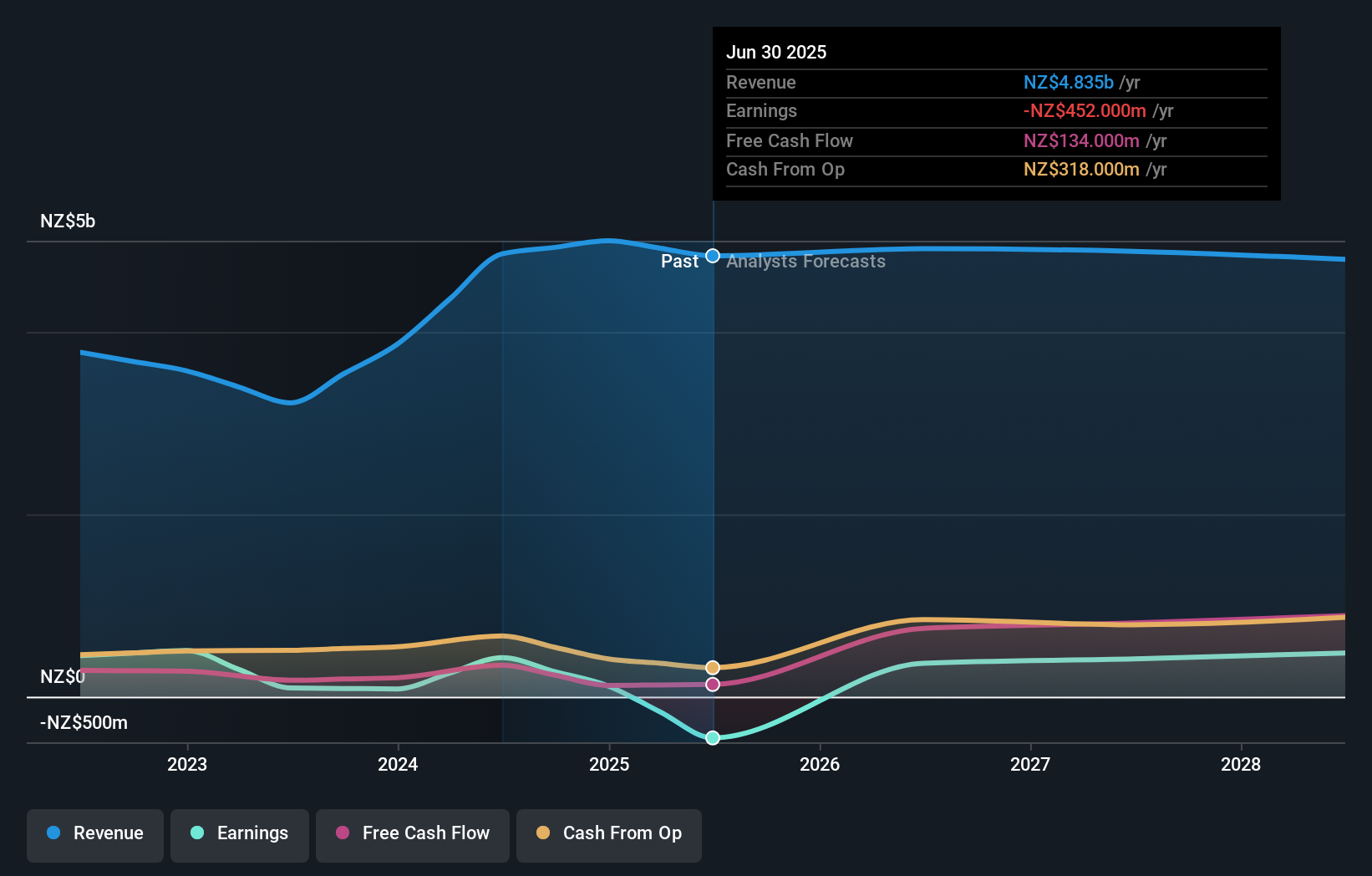- New Zealand
- /
- Renewable Energy
- /
- NZSE:MEL
Meridian Energy Limited's (NZSE:MEL) top owners are state or government with 51% stake, while 37% is held by individual investors
Key Insights
- Meridian Energy's significant state or government ownership suggests that the key decisions are influenced by shareholders from the larger public
- The largest shareholder of the company is New Zealand with a 51% stake
- Insiders have been selling lately
If you want to know who really controls Meridian Energy Limited (NZSE:MEL), then you'll have to look at the makeup of its share registry. With 51% stake, state or government possess the maximum shares in the company. Put another way, the group faces the maximum upside potential (or downside risk).
Individual investors, on the other hand, account for 37% of the company's stockholders.
In the chart below, we zoom in on the different ownership groups of Meridian Energy.
Check out our latest analysis for Meridian Energy

What Does The Institutional Ownership Tell Us About Meridian Energy?
Institutions typically measure themselves against a benchmark when reporting to their own investors, so they often become more enthusiastic about a stock once it's included in a major index. We would expect most companies to have some institutions on the register, especially if they are growing.
Meridian Energy already has institutions on the share registry. Indeed, they own a respectable stake in the company. This implies the analysts working for those institutions have looked at the stock and they like it. But just like anyone else, they could be wrong. When multiple institutions own a stock, there's always a risk that they are in a 'crowded trade'. When such a trade goes wrong, multiple parties may compete to sell stock fast. This risk is higher in a company without a history of growth. You can see Meridian Energy's historic earnings and revenue below, but keep in mind there's always more to the story.

Hedge funds don't have many shares in Meridian Energy. The company's largest shareholder is New Zealand, with ownership of 51%. With such a huge stake in the ownership, we infer that they have significant control of the future of the company. In comparison, the second and third largest shareholders hold about 2.0% and 1.9% of the stock.
Researching institutional ownership is a good way to gauge and filter a stock's expected performance. The same can be achieved by studying analyst sentiments. Quite a few analysts cover the stock, so you could look into forecast growth quite easily.
Insider Ownership Of Meridian Energy
The definition of company insiders can be subjective and does vary between jurisdictions. Our data reflects individual insiders, capturing board members at the very least. Company management run the business, but the CEO will answer to the board, even if he or she is a member of it.
Most consider insider ownership a positive because it can indicate the board is well aligned with other shareholders. However, on some occasions too much power is concentrated within this group.
Our information suggests that Meridian Energy Limited insiders own under 1% of the company. As it is a large company, we'd only expect insiders to own a small percentage of it. But it's worth noting that they own NZ$19m worth of shares. It is always good to see at least some insider ownership, but it might be worth checking if those insiders have been selling.
General Public Ownership
The general public, who are usually individual investors, hold a 37% stake in Meridian Energy. While this group can't necessarily call the shots, it can certainly have a real influence on how the company is run.
Next Steps:
I find it very interesting to look at who exactly owns a company. But to truly gain insight, we need to consider other information, too. Be aware that Meridian Energy is showing 1 warning sign in our investment analysis , you should know about...
If you are like me, you may want to think about whether this company will grow or shrink. Luckily, you can check this free report showing analyst forecasts for its future.
NB: Figures in this article are calculated using data from the last twelve months, which refer to the 12-month period ending on the last date of the month the financial statement is dated. This may not be consistent with full year annual report figures.
New: Manage All Your Stock Portfolios in One Place
We've created the ultimate portfolio companion for stock investors, and it's free.
• Connect an unlimited number of Portfolios and see your total in one currency
• Be alerted to new Warning Signs or Risks via email or mobile
• Track the Fair Value of your stocks
Have feedback on this article? Concerned about the content? Get in touch with us directly. Alternatively, email editorial-team (at) simplywallst.com.
This article by Simply Wall St is general in nature. We provide commentary based on historical data and analyst forecasts only using an unbiased methodology and our articles are not intended to be financial advice. It does not constitute a recommendation to buy or sell any stock, and does not take account of your objectives, or your financial situation. We aim to bring you long-term focused analysis driven by fundamental data. Note that our analysis may not factor in the latest price-sensitive company announcements or qualitative material. Simply Wall St has no position in any stocks mentioned.
About NZSE:MEL
Meridian Energy
Engages in the generation and retailing of electricity to residential, business, and industrial customers in New Zealand, Australia, and the United Kingdom.
Moderate growth potential with mediocre balance sheet.
Similar Companies
Market Insights
Community Narratives



